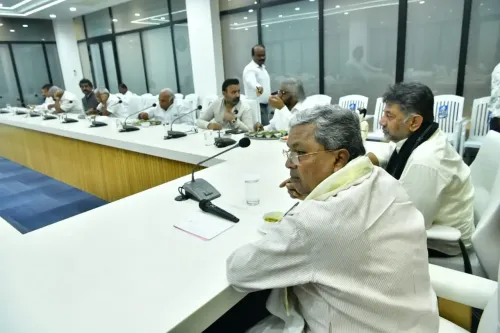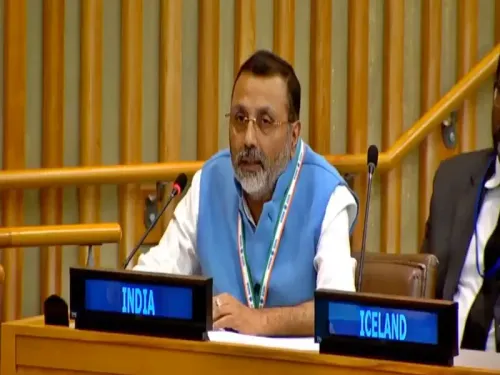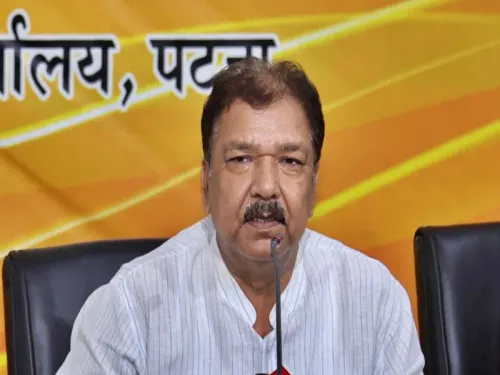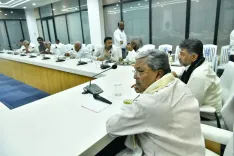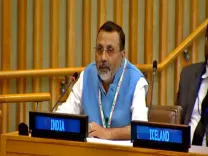What Did MoS Jitendra Singh Discover During His Review of IMD's Multi-Hazard Warning Support System?
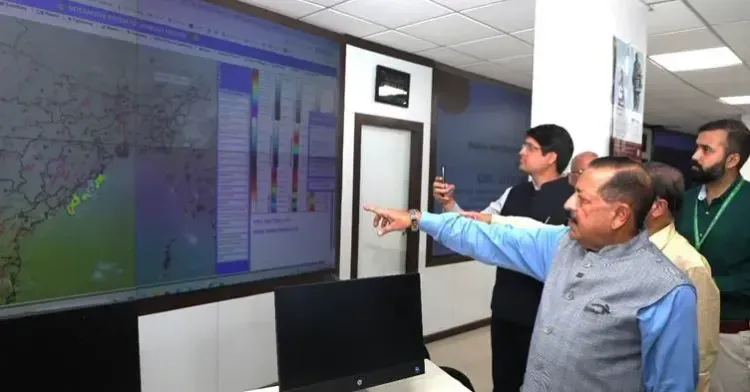
Synopsis
Key Takeaways
- Integration of AI in weather forecasting systems.
- Cost savings of Rs 250 crore through indigenous technology.
- Real-time alerts enhancing disaster preparedness.
- Mausamgram providing hyperlocal weather updates.
- Long-term vision for comprehensive weather safety by 2030.
New Delhi, Oct 12 (NationPress) Dr Jitendra Singh, the Union Minister of State (Independent Charge) for Science and Technology, Earth Sciences, conducted a review on Sunday of the Web-GIS-based Multi-Hazard Early Warning Decision Support System (DSS) crafted by the India Meteorological Department (IMD), as reported by an official.
The Minister expressed his appreciation for the advancements made by the Department in creating technology-driven, indigenous, and citizen-focused weather forecasting systems that bolster disaster readiness and enhance public safety nationwide.
He highlighted the DSS for its potential to save approximately Rs 250 crore by reducing reliance on foreign vendors and avoiding an annual maintenance cost of Rs 5.5 crore, thereby fostering self-sufficiency under the ‘Atmanirbhar Bharat’ initiative.
Singh also evaluated ‘Mausamgram’ (Har Har Mausam, Har Ghar Mausam), an innovative citizen-oriented platform that offers hyperlocal, location-specific weather updates down to the village level.
This system provides hourly forecasts for the next 36 hours, three-hourly forecasts for the following five days, and 60-hourly forecasts for up to 10 days, according to an official statement.
Citizens can easily access weather data through their PIN code, location name, or by choosing their state, district, block, and gram panchayat. Available in all official Indian languages, ‘Mausamgram’ guarantees that users throughout India receive precise and timely weather updates pertinent to their locality.
The IMD has completely overhauled its forecasting and warning generation process, facilitating real-time alerts and significant enhancements in forecasting capabilities — extending the lead period from 5 to 7 days, shortening forecast preparation time by about 3 hours, and boosting accuracy by 15-20 percent.
During his interaction with IMD officials, Dr Singh proposed the integration of AI-driven mechanisms into ‘Mausamgram’ to further enhance user-friendliness and accessibility.
He also stressed the importance of further advancing the Multi-Hazard Early Warning System to guarantee that citizens receive clear, actionable alerts that aid in disaster prevention and provide sufficient time for preparedness and safety.
Earlier, the Minister participated in the Special Swachhata Program 5.0 organized by the India Meteorological Department (IMD) at its headquarters in New Delhi, ‘Mausam Bhavan’.
As part of the ‘Ek Ped Maa Ke Naam’ initiative, Dr Singh planted a sapling on the IMD premises and honored 50 ‘Safai Mitras’ for their unwavering commitment to cleanliness and maintenance efforts.
The ongoing implementation of Mission Mausam, which includes the installation and commissioning of advanced meteorological instruments, aims to significantly enhance IMD’s forecasting capabilities by 2030, enabling severe weather hazard forecasting at a 5x5 km scale, dynamic impact-based forecasting, and risk-based early warnings for all.
This initiative aims for last-mile connectivity to ensure that early warnings reach every household by 2030, fulfilling the vision of ‘Har Har Mausam, Har Ghar Mausam’.

